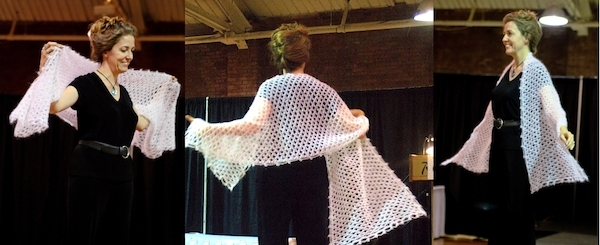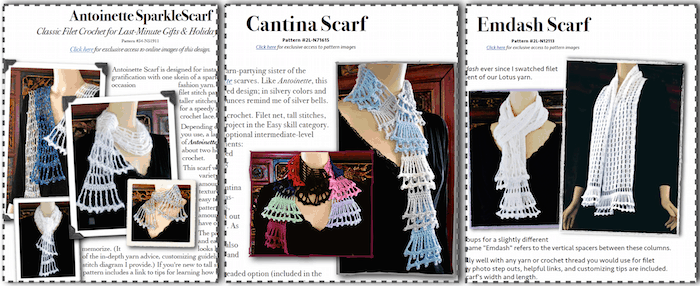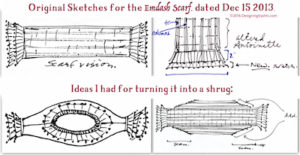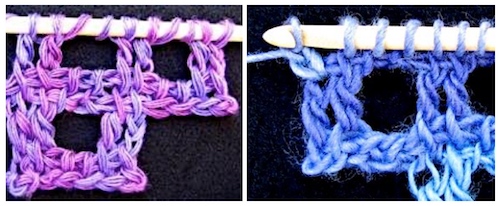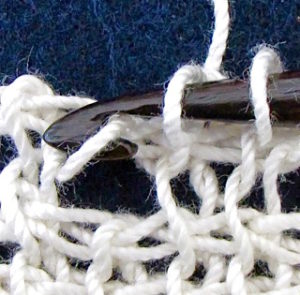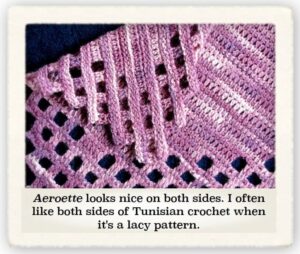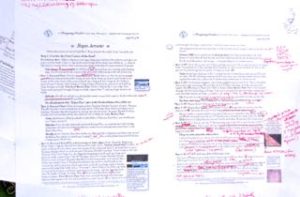Updated August 7, 2020. First posted June 20, 2016.
Having attended twenty-five crochet conferences in twelve years as of 2016, I’ve found that a lot depends on my weird, favorite conference shoes. Tomorrow’s post will be about the clothes, which are partly determined by the shoes.
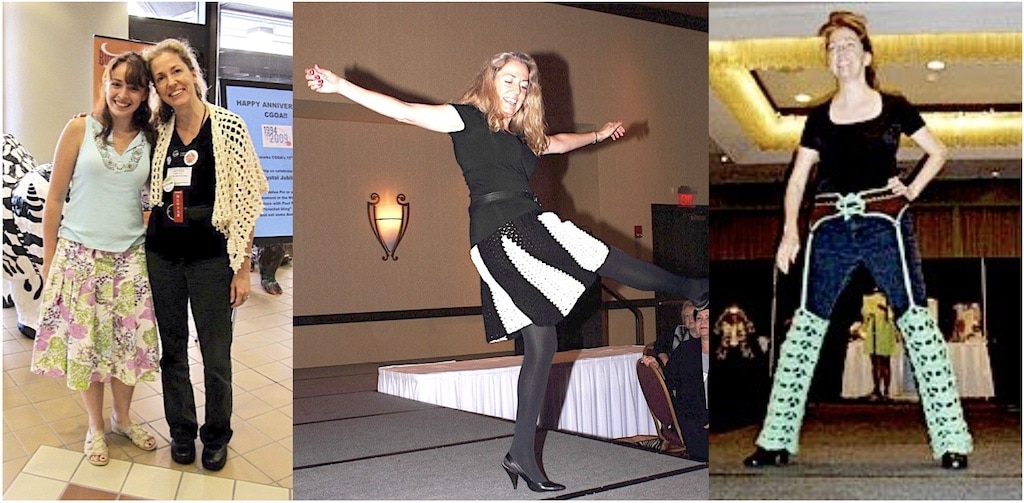
Right: Sleek boots. Pretty comfortable but a commitment! They’re big and heavy in luggage.
I get asked about my choice of shoes a lot. (In the future I can just refer people to this post.) I wear one ultra-comfortable pair of Z-Coils all day, and maybe fancy heels or sandals for evening. This year I’ll have a new pair of Z-Coils, the “Z-Breeze” with an enclosed heel. (That link goes to the Z-Breeze style without a cover on the heel coil. Below is how the covered heel option looks.)
I can go all out and wear sensationally uncomfortable shoes for only two hours at a time. I love fabulous-looking shoes, but I stop having fun after about two hours of wearing them if they’re uncomfortable.
Another way to say this is, I have an insane amount of fun at these conferences when I wear Z-Coils most of the time. I’m on my feet most of every day. Shoes make or break events like these.
What is this Z-Coil Sorcery?
After a month or two of wearing my first pair (the non-conference gray clog style shown below), my lower back strengthened. The shoe’s coiled heel took over the job of shock absorber. It was a revelation that my lower back had been my “shock absorber” whenever I walked on tiles and pavement, or lifted heavy things. (For other people it might be their knees, ankles, or thighs.) I could lift almost double the weight than I could before, without problems.
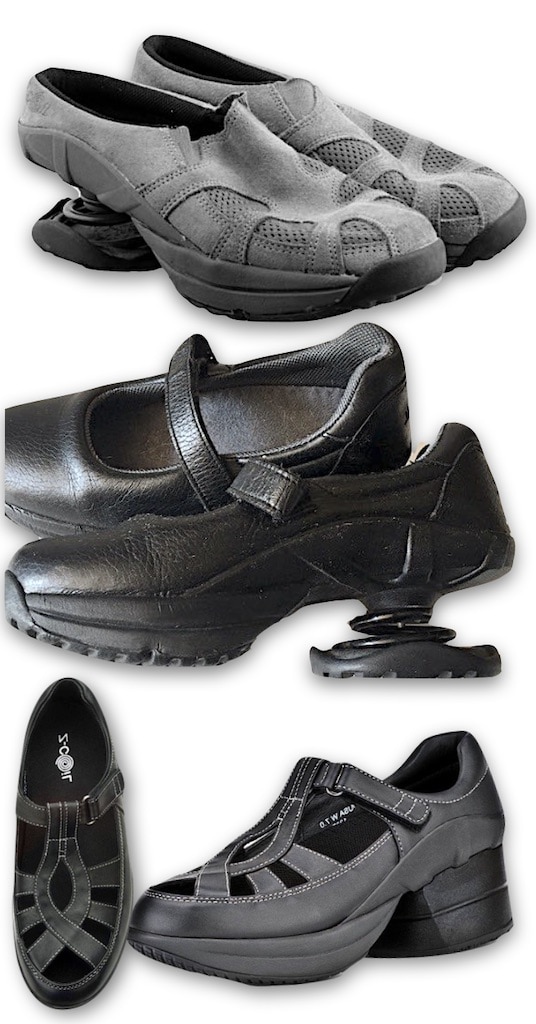
It turns out that I have good upper body strength. It was my lower back that was limiting it.
Some people only find out about Z-Coils when they develop walking difficulties. In my case, I met a local knitter who first wore them while recovering from a knee operation. Hers looked like thick white sneakers.
She loved them so much that she continued to wear them long after. I liked how weirdly futuristic the heel looked. When I tried on a pair I was hooked! This was about ten years ago.
[Need I do a disclaimer that I’m not a doctor? Not only am I not a doctor, my lower back has never been examined by one. And while I’m disclaiming, I’m also not a representative of the Z-Coil co. and they’re not rewarding me for blogging this.]
At crochet conferences I can stand on my feet all day every day while teaching or in my market booth, and carry stuff back and forth from my hotel room to the far end of a convention center.
I can also opt to wear painful-but-pretty dress shoes in the evening, and not feel like I’m paying a price for it the next day. The Z-Coils fix that.
Long Flights
Living where I do, I’ve had to take planes to 98% of all conferences I’ve attended. I never take long flights without Z-Coils. These conference shoes come through for me even before I arrive at the event. I don’t start the conference already exhausted from carrying luggage and dashing through airports to change planes at weird hours.
By the second and third days of a conference, other people’s legs and backs are tired. They look around constantly for somewhere to sit. It’s thanks to Z-Coils that I’m looking around for a place to go dancing instead! (Doris is rolling her eyes right about now.)
[I’m adding this link to Pia Thadani’s blog post about her first time attending this conference last year. Her pointers and photos convey everything very well.]
These are significant benefits, right? Now magnify them when I don’t get enough sleep. What if I have to sleep in the airport and switch planes at 5 am? My Z-Coils “have my back”—literally. It’s such a relief to rely on their strength when travel mishaps occur.
Two Big Drawbacks
One is that I don’t feel hot in them (as in sexy). Skirts are out of the question with Z-Coils for me. Some women can make it work, but I’d always feel self conscious.
The other drawback is that Z-Coil shoes are expensive (+/- $250.) Mine have been lasting me ten years, though! Plus you can replace some parts yourself.
It’s not a big drawback when I think it through, I just get sticker shock. It’s a bargain, actually. I’m telling myself this as I prepare to buy a new pair of the best conference shoes ever.
Look at this Customized Z-Coils Pinterest board I found today!
